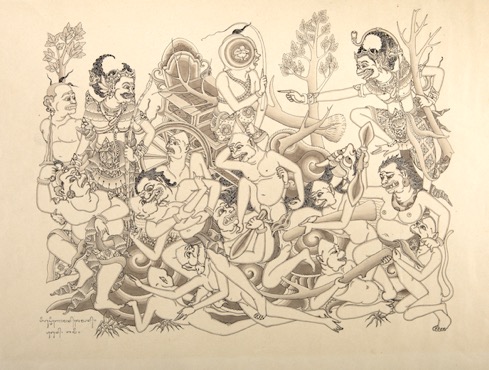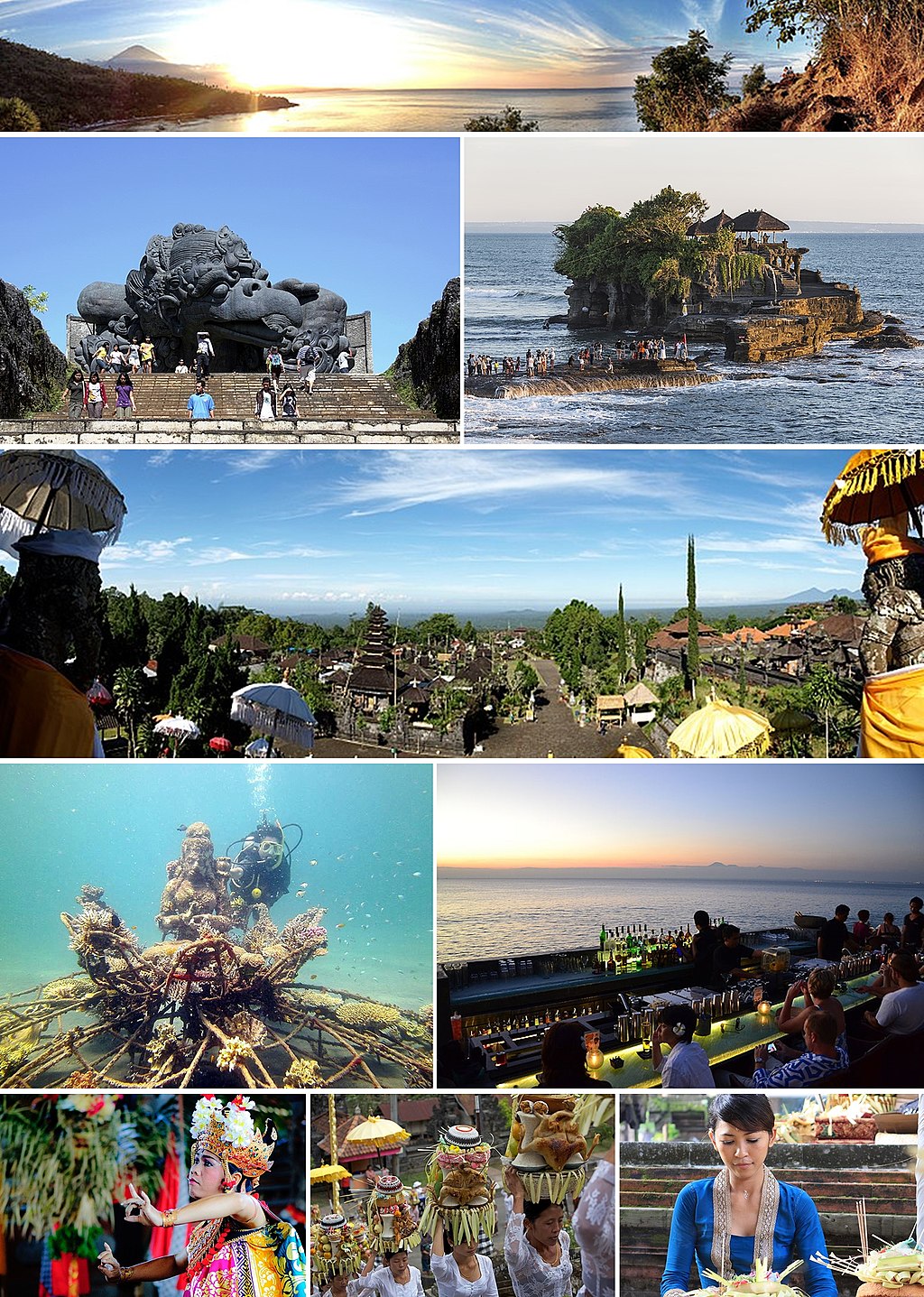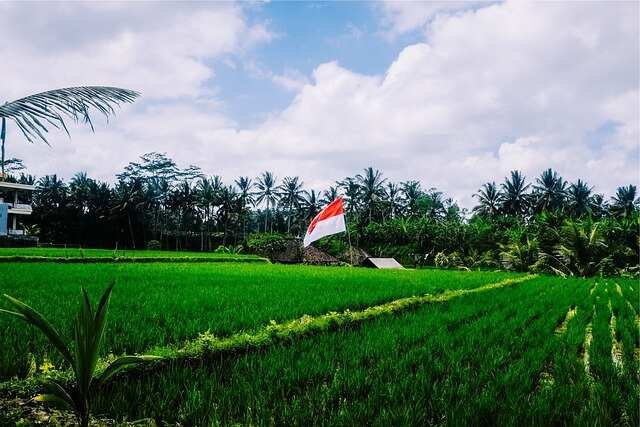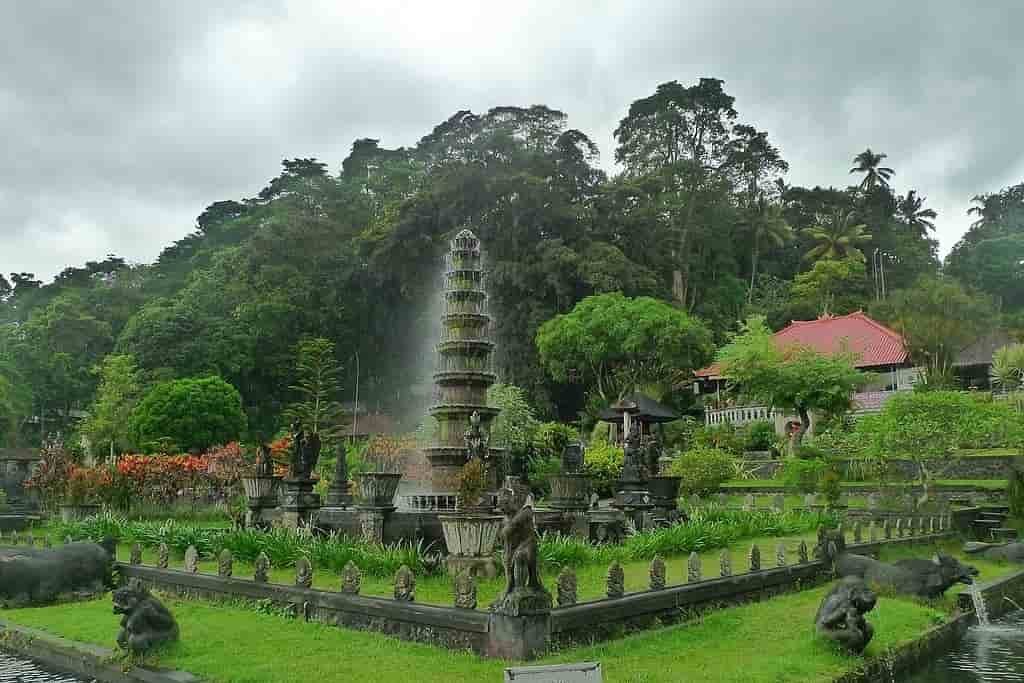Exploring the Cultural Significance of Important Days and Events in Bali
Bali is a small island in Indonesia that is widely known for its unique culture, art, and religion. There are several important days and events that are celebrated annually in Bali, each with their own unique traditions and ceremonies. In this article, we will explore some of the most significant cultural events and dates in Bali, including their significance, dates, and future dates.
The Balinese use two traditional calendars. The main one is the Pewukon which regulates a large part of Balinese life. It superimposes various cycles over a period of 210 days. The Saka calendar, on the other hand, is inherited from the Indian system. Each month begins after the new moon, which gives rise to great ceremonies.
Read also: Must Visit Temples in Bali | You need to visit one of them at least once during your stay in Bali
Important days in Bali
Bali is a culturally rich destination that is home to several unique festivals and cultural events. These events offer visitors an opportunity to witness and experience the rich traditions, customs, and beliefs of the Balinese people. These festivals have been celebrated for generations and are passed down through oral traditions and cultural practices.
Please note that the dates may vary slightly depending on the Balinese Pawukon calendar. Many important cultural events in Bali, and visitors are welcome to observe the ceremony, but it’s important to respect the local customs and traditions.
There are many important days in Bali, as well as our cultural and events as follows:
Odalan
Every 210 days (one year according to the Pawukon calendar), the whole village comes together to commemorate the founding of the temple (the odalan). It is then the occasion to pay homage to the divinities by offerings and prayers. With more than 20,000 temples in Bali, the opportunities to attend a ceremony are very numerous!
Odalan is a traditional Balinese Hindu ceremony that is held to celebrate the anniversary of a temple’s establishment or purification.
Odalan temple anniversaty procession. Balinese women dressed in traditional costume on their way to the temple. Midori, CC BY 3.0, via Wikimedia Commons
The inhabitants wear the traditional dress and the women carry the offerings on their heads to take them to the temple. The temples are decorated with many flowers and offerings.
After the prayer, water is sprinkled on the faithful and blessed rice is distributed to them. The faithful then apply it to the temples, throat and forehead.

The Odalan ritual on Tanah Lot temple. Okkisafire, CC BY-SA 4.0, via Wikimedia Commons
Here are some upcoming Odalan dates for some of the major temples in Bali:
The dates of Odalan vary from temple to temple, as each temple has its own anniversary day according to the Balinese calendar.
- Pura Ulun Danu Bratan:
- 15 September 2023
- Tuesday, 10 September 2024
- Pura Besakih, which is also known as the “Mother Temple” of Bali::
- Sunday, 22 January 2023
- Thursday, 18 January 2024
- Monday, 13 January 2025
- Pura Tanah Lot:
- Tuesday, 10 January 2023
- Thursday, 12 January 2023
- Wednesday, 8 November 2023
- Friday, 10 November 2023
- Monday, 8 January 2024
- Wednesday, 10 January 2024
Please note that the dates may be subject to change, as the Balinese calendar is a complex system that incorporates several cycles and sub-cycles.
Galungan and Kuningan
Every 210 days, Galungan celebrates the creation of the universe. The Balinese believe that the gods and the souls of the ancestors descend to the temples. Bali then comes alive to give rise to countless ceremonies and the festivities culminate 10 days later for Kuningan marks the end of this period.
These festivals celebrate the victory of good over evil and the arrival of ancestral spirits in Bali. During this time, Balinese families come together to prepare offerings, pray, and celebrate with traditional dances and music.
On the eve of Galungan, penjor (bamboo arches decorated with coconut leaves) are erected in front of the houses. The altars of domestic temples are dressed in yellow ornaments. Many shops are closed, the administration is idling but the big hotels remain open.
Here are the upcoming dates for Galungan and Kuningan in Bali:
- Galungan:
- Wednesday, 5 July 2023
- Wednesday, 1 January 2024
- Wednesday, 30 October 2024
- Wednesday, 26 March 2025
- Wednesday, 29 October 2025
- Kuningan:
- Saturday, 15 July 2023
- Saturday, 11 January 2024
- Saturday, 9 November 2024
- Saturday, 5 April 2025
- Saturday, 8 November 2025

Placing offerings in a temple. Kuningan celebration at end of Galungan festival. Spencer Weart, CC BY-SA 3.0, via Wikimedia Commons
Saraswati
Festival dedicated to the goddess of knowledge, music, and art. The Balinese pay homage to books by sprinkling sacred water. It is the name of the goddess of knowledge. This Saraswati event is also celebrated every 210 days.
Saraswati is dedicated to the goddess of knowledge, music, art, and literature, and is celebrated by students, teachers, and artists across Bali.
As the “patron saint” of schools, she is celebrated primarily by children who pray and bring offerings to the school temple in her honor. The Balinese also pay homage to the goddess and to the books by sprinkling holy water. On this day, students, artists, and scholars offer prayers and offerings to Saraswati to seek her blessings for success in their endeavors.
Here are the upcoming dates for Saraswati day in Bali:
- Saturday, 21 January 2023
- Saturday, 16 September 2023
- Saturday, 13 January 2024
- Saturday, 7 September 2024
- Saturday, 4 January 2025
- Saturday, 30 August 2025

Goddess Saraswati, Goddess of knowledge. This print from the Ravi Varma Press derived from a painting by Raja Ravi Varma follows the iconographic description of Saraswati as found in the 50th chapter of the Agni Purana. She is described in the Agni Purana as being attired in white and playing the Veena with two arms and holding an aksha-mala (a string of pearls) and a pustaka (book) in the other hands. Raja Ravi Varma, Public domain, via Wikimedia Commons
Tumpek
Tumpek is a series of Balinese Hindu holidays that are held every 210 days in the Balinese Pawukon calendar. Each Tumpek is dedicated to a different aspect of life, such as animals, tools, and knowledge.
These holidays are a time for Balinese Hindus to give thanks and show respect to the gods and spirits who are believed to protect and bless them.
Every 35 days, the Balinese make offerings to precious goods such as iron objects (Tumpek Landep), animals (Tumpek Kandang), shadows (Tumpek Wayang), trees (Tumpek Uduh) or musical instruments , masks and other objects used during ceremonies (Tumpek Krulut).
Here are the upcoming dates for Tumpek in Bali:
- Tumpek Landep: Saturday, 25 March 2023
- Tumpek Kandang: Saturday, 22 July 2023
- Tumpek Wayang: Saturday, 18 November 2023
- Tumpek Krulut: Saturday, 17 March 2024
- Tumpek Uduh: Saturday, 13 July 2024
- Tumpek Kandang: Saturday, 9 November 2024
- Tumpek Wayang: Saturday, 8 March 2025
- Tumpek Krulut: Saturday, 5 July 2025
- Tumpek Uduh: Saturday, 1 November 2025
Pagerwesi (Iron Fence)
This day is dedicated to spiritual strengthening, called Iron Gate, prayers and offerings are directed to save mankind. This Iron Gate has the meaning of a firm attitude of faith and knowledge possessed by humans, because without science human life will experience darkness.
It is the third most important festival in Bali after Galungan and Nyepi. The Balinese celebrate Pagerwesi every 210 days, always according to the Balinese calendar. The word Pagerwesi comes from “pager” (barrier) and “wesi” (iron) or “the iron barrier”. This day is dedicated to spiritual strengthening, to solidifying one’s strength against evil. On this occasion, we seek to save humanity, many offerings and prayers are made to ward off evil from men and the dead.
If they can, the Balinese will go to the big temples such as the Pura Besakih (national temple) or the Pura Jagatnata (large public temple which each kingdom has) or if they cannot go there, they will pray to the evening in their family temple to protect themselves from the negative elements.
Pagerwesi is closely related to Saraswati (day dedicated to the goddess of knowledge) since it is celebrated a few days later. The Balinese mainly honor Shiva on the day of Pagerwesi who transmitted his knowledge during the Sarawati festival. Therefore, it should also be seen that the Balinese also want knowledge to be protected from bad influences and abuse.
Pagerwesi future dates:
- Wednesday, 29 March 2023
- Wednesday, 25 October 2023
- Monday, 13 May 2024
- Friday, 29 November 2024
- Tuesday, 23 September 2025
- Sunday, 18 April 2026
- Friday, 30 October 2026
- Tuesday, 28 June 2027
- Friday, 24 February 2028
Please note that the dates may vary slightly depending on the Balinese Pawukon calendar. It’s always advisable to check with local sources to confirm the exact dates for the Pagerwesi ceremony.
Melasti
Melasti is a Hindu Balinese purification ceremony that is held several days before Nyepi, the Day of Silence. During this ceremony, Hindus gather on the beach to perform rituals and prayers to cleanse themselves of impurities and sins, and to welcome the spirits of their ancestors.
An important ceremony for us Hindus is Melasti which consists of the purification of the Pratima (representations of all the gods of the village) as well as other Hindu religious symbols which are carried in procession to the sea for those living not far from it. or to the lake for mountain people.
The purpose of this ritual is to purify all impurities but above all to purify Bhuana Alit (the little world) and Bhuana Aung (the universe) from bad influences, sins and bad thoughts. Bhuana Alit (the small world) is actually the heart/mind of every individual who lives in this world.
This Melasti ritual is important because it reminds us of the value of life and how important it is and that we need a day to purify ourselves and the universe. So with this ceremony all the components of the universe have a pure spirit so that the world can survive against the threat of evil.
Melasti ceremony
This Melasti ceremony is one of the Bali heritage and culture and takes place 3/4 days before the Balinese New Year: Nyepi it depends on the rules of each village. This day we must dress in our traditional white outfits: symbol of purity.
Several men must thus carry the Pratimas to the sea or lake where they will be cleaned and then blessed, they are accompanied by gamelans who follow them during the procession, pretty umbrellas, standards, banners, barongs and rangda. One can sometimes walk for several kilometers in order to join the stream to carry out the purification of the pratimas because it is believed that these waters purify all the elements of the universe.
Sometimes during the procession it happens that some people are suddenly in a trance, it’s really an impressive thing to see and which never ceases to surprise us despite being used to it.
Many offerings were prepared for this special day as well as a beautiful traditional welcome dance for the gods.
Our advice: go to any beach that day in Bali to observe these processions.

Melasti ritual is usually carried out to welcome the Nyepi day in Bali. This ritual is carried out in water centers such as lakes, springs and beaches. Imadedana, CC BY-SA 4.0, via Wikimedia Commons
Here are the upcoming dates for Melasti in Bali:
- Friday, 10 March 2023
- Wednesday, 28 February 2024
- Sunday, 16 March 2025
- Friday, 6 March 2026
- Tuesday, 23 March 2027
- Sunday, 12 March 2028
- Friday, 1 March 2029
- Tuesday, 19 March 2030
- Sunday, 8 March 2031
- Friday, 27 February 2032
Nyepi (Silent Day)
A few days before Nyepi, Melasti is celebrated all over the island. This is the great purification. The Balinese then converge on the sea to purify themselves there. On the eve of Nyepi (New Year of the Saka calendar), all major crossroads receive large offerings that are believed to exorcise evil spirits.
In the evening, large processions wander through the streets displaying the ogoh-ogoh (demonic giant dolls). Nyepi is the day of silence, no one has the right to go out in the street or turn on a light.

Ogoh-ogoh procession on the eve of Nyepi. Micnae1965, Public domain, via Wikimedia Commons
Nyepi Day, also known as the “Day of Silence”, is a significant cultural event in Bali. It is celebrated annually on the Balinese New Year, which usually falls in March or April. On this day, the entire island shuts down, and people are expected to observe silence, meditation, and self-reflection. There are also several unique ceremonies that take place before and after Nyepi Day, including the Ogoh-Ogoh parade, where people carry large demonic effigies through the streets.
Nyepi Future dates:
- Tuesday, 14 March 2023
- Sunday, 3 March 2024
- Thursday, 20 March 2025
- Tuesday, 10 March 2026
- Saturday, 27 March 2027
- Thursday, 16 March 2028
- Tuesday, 6 March 2029
- Sunday, 24 March 2030
- Friday, 13 March 2031
- Wednesday, 3 March 2032
- Monday, 20 March 2033

Ogoh-Ogoh, demonic figures, are paraded in Bali on the eve of Nyepi (Day of Silence). Ngrupuk-Ngrupukan, also known as the Ogoh-Ogoh parade celebrated on the night before Nyepi. MagdaLena7, CC BY-SA 4.0, via Wikimedia Commons
Ngembak Geni Festival (marks the end of the period of self-reflection and silence during Nyepi and represents a new beginning,)
Ngembak Geni, also known as the “Day of Silence,” is a Hindu festival that falls on the day after Nyepi, the Balinese New Year. Nyepi is a day of complete silence and self-reflection, where the Balinese people refrain from engaging in any activities, including lighting fires, using electricity, and going out of their homes.
The day after the big Balinese New Year celebration, Nyepi, Ngembak Geni is an integral part of it. Bali Hindus make amends and spend the day with family. It is a day of forgiveness, reconciliation, and social gathering, where families and friends come together to ask for forgiveness and start anew.
Ngembak Geni marks the end of this day of silence and the return to normal activities.
During Ngembak Geni, the Balinese people perform several rituals to purify themselves and their surroundings. One of the main rituals involves making offerings and seeking blessings from the gods at the local temples. Balinese families come together to perform these rituals, which are believed to cleanse their bodies and souls, and bring good luck for the coming year.
Here are the upcoming dates for Ngembak Geni in Bali:
- Wednesday, 29 March 2023
- Monday, 18 March 2024
- Friday, 4 April 2025
- Wednesday, 25 March 2026
- Monday, 15 March 2027
- Saturday, 1 April 2028
- Thursday, 22 March 2029
- Tuesday, 12 March 2030
- Sunday, 31 March 2031
- Friday, 20 March 2032

Omed-omedan ceremony in Sesetan, Denpasar, Bali. Yohana Afrita, CC BY-SA 4.0, via Wikimedia Commons
Omed-Omedan Festival (a celebration of youth and love)
Omed-Omedan, also known as the “Kissing Festival,” is a unique and playful festival celebrated in the village of Sesetan in Bali. The festival takes place on the day after Nyepi, similar to Ngembak Geni, and involves young unmarried men and women engaging in a friendly kissing competition.
It is seen as an opportunity for young people to express their affections for each other in a fun and playful manner.
The festival is also believed to bring good luck and blessings to the village and its inhabitants, fostering a sense of community and togetherness. During the festival, young men and women of the village participate in a playful water fight. After the water fight, the participants gather in the middle of the street, and the unmarried ones are paired up to share a kiss. It is believed that this tradition brings good luck and happiness to the village.
The festival begins with a lively procession where the participants, dressed in traditional Balinese attire, make their way to the village’s main square. Once they gather, the young men and women form two lines facing each other, and at the signal, they start playfully pulling and pushing each other, with the aim of getting a chance to kiss their crush. It is believed that the couple who kisses will have good luck and blessings in their romantic endeavors.
Here are the upcoming dates for Omed-Omedan Festival in Bali:
- Wednesday, 15 March 2023
- Monday, 4 March 2024
- Friday, 21 March 2025
- Wednesday, 11 March 2026
- Sunday, 28 March 2027
- Friday, 17 March 2028
- Wednesday, 7 March 2029
- Tuesday, 26 March 2030
- Saturday, 15 March 2031
- Thursday, 5 March 2032
Hindu Gods and Goddesses in Bali | A Guide to the Most Important Deities
August 17
Bali gathers to celebrate Independence Day of Indonesia. This national holiday is important and allows everyone to remember the hardships they have gone through. Bali, as a province of Indonesia, also celebrates Independence Day with great enthusiasm and patriotic spirit.
On Independence Day, the national flag is raised in the morning in all government buildings, schools, and private institutions throughout Bali. Many Balinese people also decorate their homes and businesses with the red and white Indonesian flag.
On Independence Day, the national flag is raised in the morning in all government buildings, schools, and private institutions throughout Bali. Many Balinese people also decorate their homes and businesses with the red and white Indonesian flag.
Bali is a culturally rich destination that is home to several unique festivals and cultural events. These events offer visitors an opportunity to witness and experience the rich traditions, customs, and beliefs of the Balinese people. To learn more about these events and their significance, you can visit https://www.bali.com/events.html.
Sources: PinterPandai, CleverlySmart
Photo credit: AgungAtmaja via Pixabay
Bali Arts Festival in Denpasar | The Biggest Annual Cultural Event in Bali
Have you booked your villa in Seminyak center?
Located in Seminyak Center – Bali, Villa Carissa offers a private swimming pool and enclosed garden to guarantee your privacy. You can book your private pool villa here with us.
Whether you’re traveling with family, friends, or on a romantic getaway, villa Carissa in Seminyak center offers the perfect base for exploring Bali’s many attractions and enjoying a relaxing vacation.




















































































